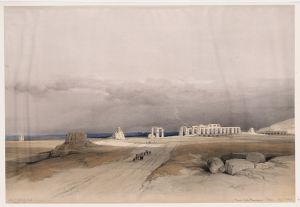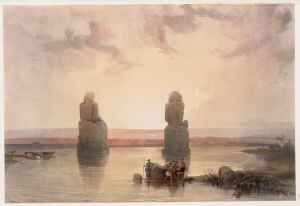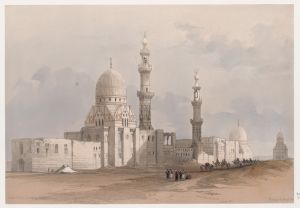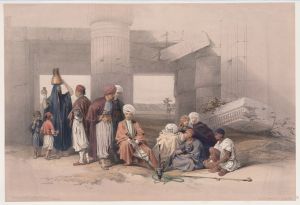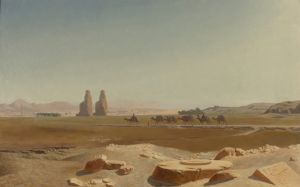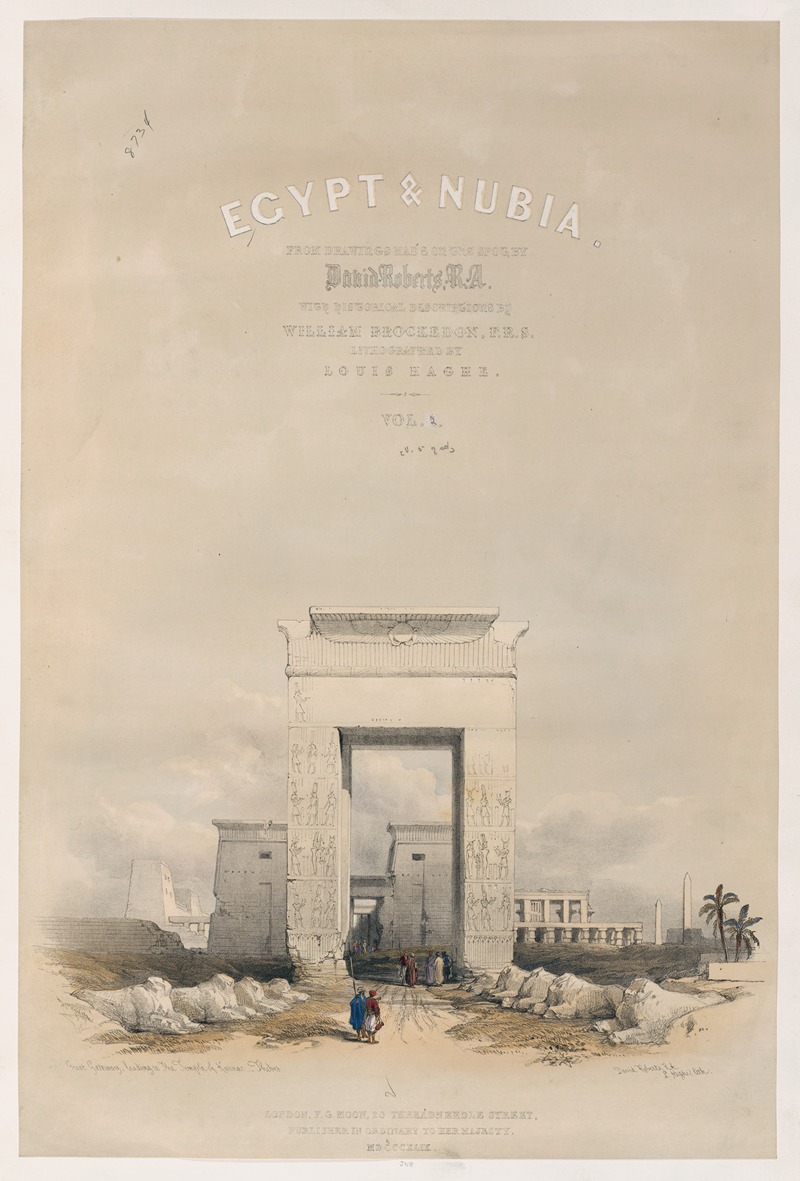
Great gateway leading to the Temple of Karnac [Karnak], Thebes. [Title vignette, vol. 2]
A hand-painted replica of David Roberts’s masterpiece Great gateway leading to the Temple of Karnac [Karnak], Thebes. [Title vignette, vol. 2], meticulously crafted by professional artists to capture the true essence of the original. Each piece is created with museum-quality canvas and rare mineral pigments, carefully painted by experienced artists with delicate brushstrokes and rich, layered colors to perfectly recreate the texture of the original artwork. Unlike machine-printed reproductions, this hand-painted version brings the painting to life, infused with the artist’s emotions and skill in every stroke. Whether for personal collection or home decoration, it instantly elevates the artistic atmosphere of any space.
"Great Gateway Leading to the Temple of Karnac [Karnak], Thebes" is a notable artwork by the Scottish painter David Roberts, created as a title vignette for the second volume of his monumental work, "The Holy Land, Syria, Idumea, Arabia, Egypt, and Nubia." This series of lithographs, published between 1842 and 1849, is renowned for its detailed and romanticized depictions of the Near East and North Africa, capturing the imagination of the 19th-century European audience.
David Roberts (1796-1864) was a prominent Orientalist painter, known for his detailed and accurate representations of ancient monuments and landscapes. His journey to Egypt and the Near East in 1838-1839 provided the material for his most famous works. During this expedition, Roberts made numerous sketches and notes, which he later used to create his lithographs upon returning to Britain.
The Temple of Karnak, located in modern-day Luxor (ancient Thebes), Egypt, is one of the largest and most significant religious complexes in the world. It was primarily dedicated to the god Amun, along with his consort Mut and their son Khonsu, forming the Theban Triad. The temple complex was developed over approximately 2,000 years, from the Middle Kingdom (around 2055 BC) to the Ptolemaic period (305-30 BC), with contributions from numerous pharaohs.
Roberts' depiction of the "Great Gateway Leading to the Temple of Karnac" focuses on the grand entrance to the temple complex, known as the First Pylon. This massive structure, characterized by its towering walls and monumental scale, served as the main entrance to the temple. The pylon is adorned with intricate carvings and hieroglyphics, showcasing the grandeur and architectural prowess of ancient Egyptian civilization.
The lithograph captures the imposing nature of the gateway, with its colossal size and detailed ornamentation. Roberts' attention to detail and use of light and shadow bring the scene to life, highlighting the texture of the stone and the depth of the carvings. The presence of local figures in the foreground adds a sense of scale and context, emphasizing the enduring legacy of the ancient structure amidst the daily life of 19th-century Egypt.
Roberts' works, including this depiction of the Great Gateway, played a significant role in shaping Western perceptions of the Near East and its ancient heritage. His lithographs were widely circulated and admired, contributing to the growing interest in Egyptology and the preservation of ancient monuments. The accuracy and artistic quality of his works continue to be appreciated by historians, art enthusiasts, and the general public.
In summary, "Great Gateway Leading to the Temple of Karnac [Karnak], Thebes" by David Roberts is a significant piece of 19th-century Orientalist art, capturing the grandeur of one of Egypt's most important ancient sites. Through his detailed and evocative depiction, Roberts provides a window into the past, allowing viewers to appreciate the architectural and cultural achievements of ancient Egypt.






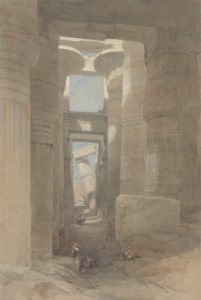
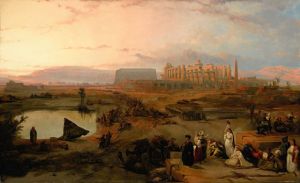
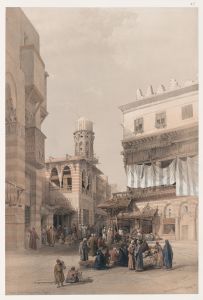
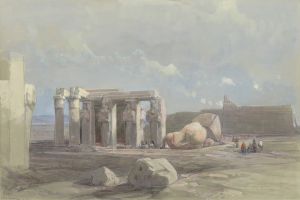
![Karnac [Karnak]. Nov. 27, 1838.](/imgs/217501/s/david-roberts-karnac-karnak-nov-27-1838-2ea4b2c4.jpg)
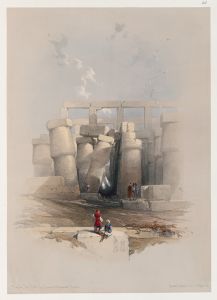
![Ruins of Karnack [Karnak].](/imgs/217533/s/david-roberts-ruins-of-karnack-karnak-f5b9f9ff.jpg)
